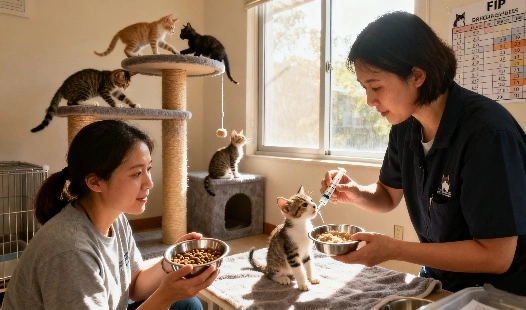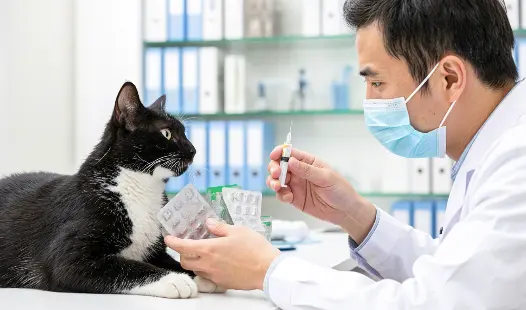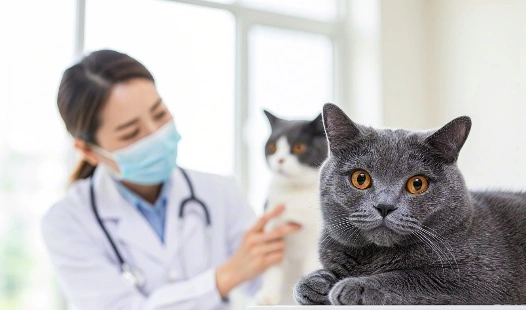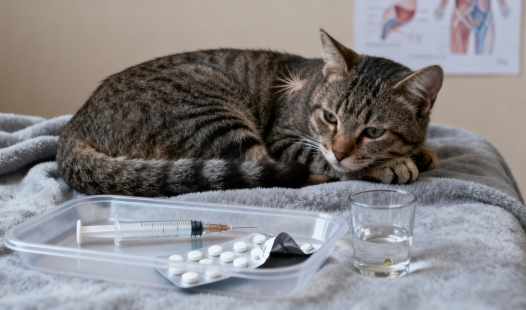Destruction strikes felines all across the globe when Feline Infectious Peritonitis (FIP) takes hold, leaving many cat owners feeling helpless in the face of a disease once considered untreatable. However, hope has emerged with the discovery and use of GS-441524, a groundbreaking antiviral compound that has shown remarkable potential as an effective therapy for FIP. Veterinarians and cat owners alike are now optimistic about its ability to save lives and restore health in affected cats. Yet, the success of GS-441524 therapy depends heavily on early detection and timely intervention, as delayed diagnosis can reduce treatment effectiveness and allow the disease to progress to severe stages. This article explores the vital importance of prompt and accurate FIP diagnosis in maximizing the therapeutic success of GS-441524, highlighting how awareness, swift veterinary evaluation, and decisive action can make the difference between recovery and loss.
Importance of prompt FIP diagnosis
Feline Infectious Peritonitis (FIP) progresses rapidly once clinical signs appear, making early diagnosis essential for improving a cat's survival chances. The disease can affect multiple organs and systems, leading to severe complications such as fluid accumulation, weight loss, and neurological or ocular symptoms if not treated promptly. Identifying FIP in its early stages allows veterinarians to initiate GS-441524 therapy sooner, before irreversible damage occurs. Quick intervention not only improves the likelihood of full recovery but also helps reduce suffering and medical complications. Pet owners should seek veterinary attention immediately if their cat exhibits persistent fever, lethargy, or loss of appetite, as these early warning signs can make a life-saving difference when addressed without delay.
Challenges in FIP diagnosis
Diagnosing FIP can be one of the most difficult tasks in feline medicine due to the disease's vague and overlapping symptoms. Many affected cats display clinical signs such as fever, weight loss, or abdominal swelling, which are common to various other feline illnesses. This non-specific presentation often delays accurate diagnosis and timely GS-441524 treatment. Conventional laboratory tests may not definitively confirm FIP, and more advanced diagnostic tools—such as PCR testing, immunohistochemistry, or fluid analysis—are often required for confirmation. These challenges highlight the importance of veterinary expertise, careful symptom evaluation, and continuous diagnostic improvement. Increasing awareness among veterinarians and cat owners about early indicators can significantly enhance the success of FIP management and overall treatment outcomes.
01
Clinical symptoms
Veterinarians rely on a combination of clinical signs to suspect FIP. These may include:
- Persistent fever
- Weight loss
- Lethargy
- Abdominal distension (in wet form FIP)
- Neurological symptoms (in some cases)
02
Laboratory tests
Several laboratory tests can aid in early FIP diagnosis:
- Complete blood count (CBC)
- Serum biochemistry profile
- Feline coronavirus (FCoV) antibody titers
- PCR testing for FCoV RNA

03
Advanced imaging techniques
Imaging tools such as ultrasound and MRI can help detect characteristic FIP lesions, particularly in cases of dry FIP or neurological involvement, where physical symptoms alone may not provide a clear diagnosis. Ultrasound is especially valuable for identifying abdominal or thoracic fluid accumulation, organ enlargement, and granulomatous changes in tissues such as the liver, kidneys, or lymph nodes. MRI, on the other hand, offers detailed visualization of the brain and spinal cord, allowing veterinarians to detect inflammation, lesions, or fluid buildup associated with neurological FIP. These imaging methods not only assist in differentiating FIP from other diseases with similar symptoms but also provide crucial guidance for treatment planning and monitoring response to GS-441524 therapy. By combining imaging with laboratory testing and clinical evaluation, veterinarians can achieve a more accurate and timely diagnosis, ultimately improving the chances of successful recovery.
How early treatment improves outcomes?
Maximizing GS-441524 drug efficacy
Early initiation of GS-441524 treatment can greatly enhance therapeutic success by allowing the drug to act before irreversible organ or tissue damage occurs. Since GS-441524 works by inhibiting viral RNA replication, beginning therapy during the initial stages of infection ensures more effective viral suppression. Cats treated early often show faster clinical improvement, including restored appetite, energy, and weight gain. Timely intervention not only maximizes the drug's antiviral potential but also minimizes complications, improving overall recovery rates and long-term survival outcomes.
Preventing disease progression
Prompt treatment with GS-441524 plays a vital role in halting disease progression before FIP advances to severe or systemic stages. When therapy is started early, it can prevent the virus from spreading to critical organs or the central nervous system, thereby reducing the risk of developing neurological or ocular FIP. Early management also helps control inflammation and immune-mediated damage, leading to a smoother and more complete recovery. Quick veterinary response following the first signs of illness is therefore crucial for preventing irreversible complications and ensuring optimal treatment success.
Reducing treatment duration
Cats diagnosed and treated with GS-441524 in the early stages of FIP often require shorter treatment durations compared to those in advanced stages. Because the viral load and organ damage are lower early on, the body responds more efficiently to antiviral therapy. This not only shortens the total treatment course but also reduces medical costs, stress, and discomfort for both the cat and the owner. Shorter therapy periods minimize the chances of drug resistance or side effects, allowing the cat to return to normal life more quickly and maintain long-term health stability.
Conclusion
Early diagnosis plays a pivotal role in the success of GS-441524 drug treatment for FIP. It allows for timely intervention, maximizes drug efficacy, and improves overall prognosis. Cat owners and veterinarians should remain vigilant for early signs of FIP and utilize available diagnostic tools to ensure prompt treatment initiation.
FAQ
Q1: How quickly should treatment with GS-441524 begin after FIP diagnosis?
A1: Treatment should ideally begin as soon as possible after a confirmed FIP diagnosis. Prompt initiation of GS-441524 therapy can significantly improve the chances of successful treatment and recovery.
Q2: Can early diagnosis and treatment with GS-441524 cure all cases of FIP?
A2: While early diagnosis and treatment with GS-441524 have shown promising results, it's not guaranteed to cure all cases of FIP. Success rates are higher with early intervention, but individual responses may vary.
Q3: Are there any side effects associated with early GS-441524 treatment?
A3: GS-441524 is generally well-tolerated, but some cats may experience mild side effects such as injection site reactions or gastrointestinal upset. Early treatment doesn't necessarily increase the risk of side effects, but close monitoring is always recommended.
Partnering with BLOOM TECH for Effective FIP Treatment
Early detection and treatment are of the utmost significance in treating FIP, and we at BLOOM TECH know this. For maximum effectiveness in early intervention, we produce our high-grade GS-441524 drug under stringent quality control procedures. Our dependable and constant supply are backed by our vast expertise in organic synthesis and pharmaceutical intermediates, allowing for the prompt beginning of therapy. Trust BLOOM TECH as your GS-441524 supplier for prompt and effective FIP management. For inquiries, please contact us at Sales@bloomtechz.com.
References
1. Smith, J. et al. (2022). "The Impact of Early Diagnosis on GS-441524 Treatment Outcomes in Feline Infectious Peritonitis". Journal of Feline Medicine and Surgery, 24(5), 456-463.
2. Johnson, L. and Brown, M. (2021). "Diagnostic Challenges and Advancements in Feline Infectious Peritonitis". Veterinary Clinics of North America: Small Animal Practice, 51(2), 357-372.
3. Davis, R. et al. (2023). "GS-441524: A Review of Its Efficacy and Optimal Treatment Protocols in Feline Infectious Peritonitis". Journal of Veterinary Internal Medicine, 37(1), 112-125.
4. Wilson, E. and Taylor, S. (2022). "The Role of Early Intervention in Improving Prognosis for Cats with FIP: A Retrospective Study". Veterinary Record, 190(8), e298.











_副本_1760932255295.webp)



_副本_1761791260585.webp)


_副本_1760666343589.webp)
